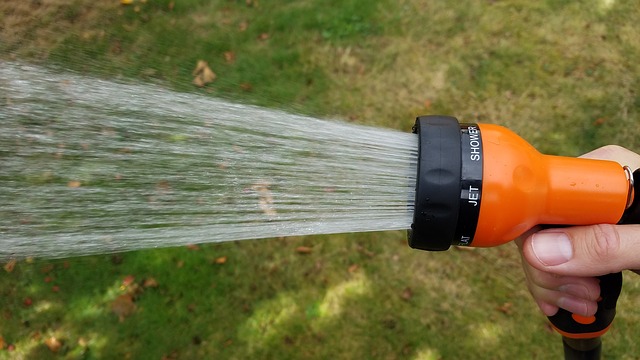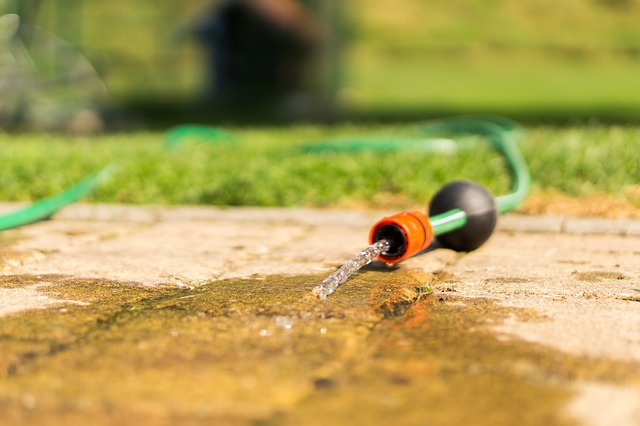
It’s easy to see if your outside faucet is treated. First – go to your water treatment equipment. Find the pipe that comes FROM your storage tank and INTO your water treatment equipment.
(Or – if you have city water, the pipe that comes FROM an outside wall)
Any pipe BEFORE your Water Treatment Equipment is untreated. Most of the time, the outside faucet is NOT treated and will branch off BEFORE the water treatment equipment.
Why NOT Treat The Outside Water?
#1: Flow Rate Too Fast To Treat the Water
If you are on well water, an outside water spigot, faucet or hose usually flows at 5-7 gallons per minute. If you are on city water, the water can flow much faster.
Most residential water treatment equipment, like an Acid Neutralizer, can only treat water at 3-4 GPM or less. The Water Softener is one of the fastest and can treat water at much faster flow rates – above 20 GPM.
#2: Too Much Wear and Tear on Your Water Treatment Equipment
Typically – your water treatment equipment is programmed to treat water based on normal household use. And that is considered to be 75 gallons of water per person, per day. So a family of 4 uses about 300 gallons a day.
Any time you use outside water – you are using roughly 300 gallons in 45 minutes.
Watering your lawn or power washing your house? – about 400 gallons per hour.
Irrigation System? – about 300 gallons per ZONE!
And don’t even tell me that all you want to do is to fill your POOL or Hot Tub or just “top off your pool” for 3-4 hours. That’s over a THOUSAND gallons.
Remember – every 45 minutes of outside water use is about the same water usage as 4 people in a 24 hour period.
So if you have water treatment equipment, you are really asking it to clean a LOT of water. And that means you will use more salt, more calcite, more soda ash, more filters, and even more water to clean the systems.

Reasons You SHOULD Treat Your Outside Water
#1 Rust Staining:
Connecticut has a ton of iron in the water. If you water your lawn or power-wash your house with untreated water, you may turn your lawn, walkways and even siding reddish-orange.
Treated water will help prevent this staining and orange sludge on your grass.
#2 Blue Green Staining:
If your water is acidic – your copper pipes and fixtures could develop pin-hole leaks and become thin and brittle, including your outside spigots.
Water treated with an acid neutralizer will help prevent this. But you have to make sure the equipment is the right size to handle that much water and flow rate.
#3 Hard Water Spots on Your Car:
Hard water can leave a hard, white film and spots all over your car. These spots do not easily wipe away and can even damage some clear coats if allowed to sit on them too long.
Soft, treated water will eliminate the hard water build up. While some spots will remain if you allow the car to air dry, these spots are typically minor annoyances and will wipe easily away with a damp cloth.
As with anything, there are pros and cons to having your outside spigots treated by your water treatment equipment. A water test combined with an assessment of how much water you and your family use will help determine if treating your outside spigots is reasonable and what you can expect if you chose to do so.
